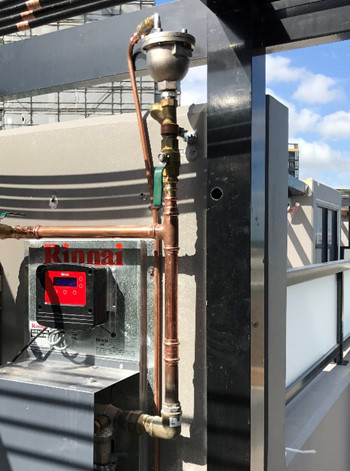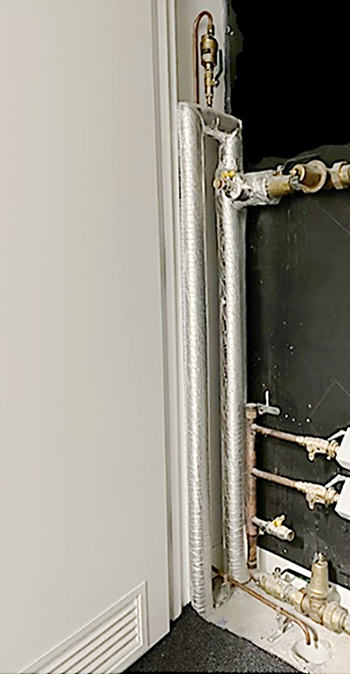Related information and links
This advisory note outlines the requirements when installing automatic air elimination valves.
| Advisory note | 17/2021 |
| To | Licensees, contractors, the plumbing and drainage industry |
| Scope | Applies to all of NSW |
Issue
During recent audit inspections conducted on class 2 buildings, it has been identified that some of industry has not made themselves aware of changes introduced in the AS/NZS3500.4 2018 edition in relation to automatic air elimination valves on circulatory heated water systems.
Detail
The 2018 edition of AS/NZS3500.4 - Heated water services introduced new requirements for the installation of circulatory (flow and return) heated water systems.
Clause 10.8 and its subclauses require that all circulatory heated water piping shall be designed and installed with air elimination valves to eliminate air that can become entrained.
Automatic air elimination devices shall be installed—
(a) at the highest point or points of the circulatory piping
(b) on the secondary flow adjacent to the water heater or bank of water heaters
(c) in an accessible location; and(d)with a connected drain delivering over a tundish.
Automatic air elimination devices shall not be installed on the suction side immediately prior to the pump.
Note: Clause 10.10.2(f) requires an isolating valve to be installed at the inlet to each air elimination valve.

Photo 1: Open rooftop installation

Photo 2: Installation within a services cupboard
C10.8.2
Trapped air in circulatory heated water pipe systems can lead to increased corrosion of pipes as well as cause column separation which causes water hammer, pressure surges and cavitation.
Water hammer is caused by sudden changes in velocity. Trapped air leading to column separation and fast-acting valves or tapware can be causes of water hammer within heated water pipework. Piping should be designed so that entrapped air is automatically removed and pipes are sized to minimize the effect of pressure shock.
Cavitation is the formation of vapour bubbles within a liquid, which can occur due to rapid drop in pressure. When a vapour bubble collapses it generates an immediate pressure shock wave of several thousand kilopascals and extreme temperatures. Vapour bubbles that collapse near a pipe wall or surface will over time cause significant damage to the piping material. Cavitation damage is more likely to occur in heated water piping systems at higher water temperatures due to a reduced vapour pressure of the liquid. As the temperature of water increases and the pressure decreases the ability of a liquid to contain dissolved gases reduces and vapour bubbles form. The damage to pipes typically occurs when vapour bubbles are present and the pressure of the system increases, forcing the vapour bubbles to implode. Heated water plant located on the rooftops of high-rise buildings with the piping system circulating down throughout the building are particularly susceptible to these actions. Where the heated water plant is located within the basement of high-rise buildings it is the return pipe that becomes susceptible to damage. Central heated water systems should be designed and installed to eliminate the damaging effects of cavitation.
Reference: AS/NZS3500.4 – 2018
Issued by: Building Specialist Compliance Unit, Parramatta
Date: August 2021